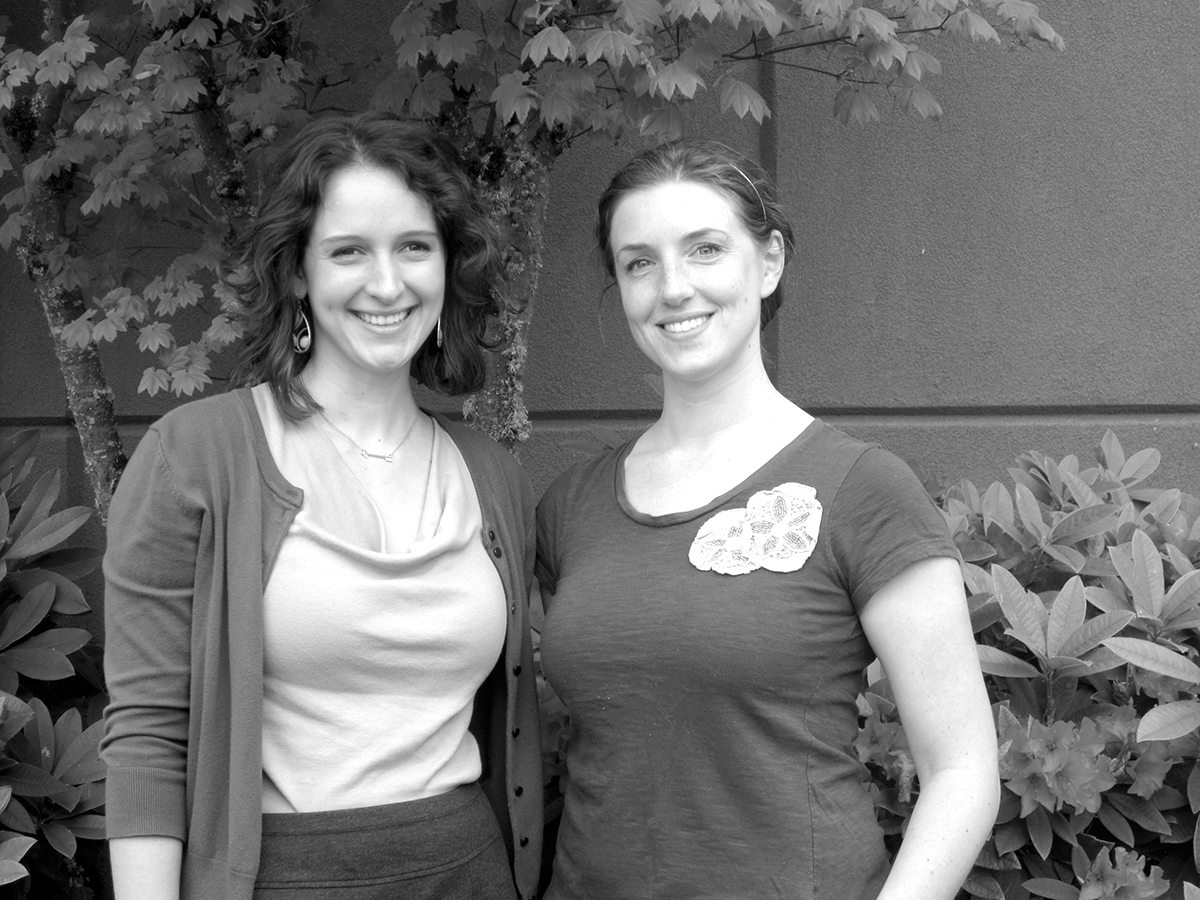
by Marina Rosenthal and Carly Smith, PhD candidates, UO Department of Psychology (Clinical Psychology)
Psychology of gender and trauma has a long, fraught history balancing scientific rigor with impassioned activism. In a constant struggle to appear objective, researchers often deny any broader purpose to their work. “We just happen to study trauma, it’s not personal,” or “Our gender does not render our research subjective,” we say. Yet as trauma researchers, we do have a stake—indeed, our entire society is at stake. How can we, as researchers, walk the tenuous line between scrupulous, precise scientific methods and fervent, social-justice-seeking activism?
We grapple with these questions, as do all psychologists who furtively or frankly strive to change the world. Yet many examples of social scientists engaging in research that is indistinguishable from activism in terms of intention, implementation, and impact pepper our lineage.
One landmark example of science informing social-justice activism is evident in the use of Kenneth and Mamie Clark’s research on the psychological impact of racial segregation (1947; 1950). The Clarks’ research indicating the deeply damaging effect of life in an unequal society on black children was ultimately used as evidence that segregation created inherently unequal educational experiences in Oliver Brown vs. Board of Education of Topeka, Kansas (Clark, 2004). The Clarks faced an outcry of opposition in response to both desegregation and the use of social science to compel desegregation. Kenneth Clark aptly summarizes the resistance faced by researchers whose work approaches activism, stating: “the accessory role of social scientists in [desegregation] subjects them to the criticisms of those who are identified with and seek to perpetuate the racial status quo and the related power controls” (Clark, 1960, p. 225). Fusion of science and justice is both effective and dangerous; when we as a culture know with both our most visceral instincts and our most methodical research that social oppression is harmful to some and beneficial to others, we cannot deny the need for change. Change, to those whose privilege is in jeopardy, is never welcome and will always provoke defiance.
Yet as researchers and as activists, inevitable hostility must not hinder the application of science for social change. In the present, a new permutation of the same frightened opposition subsists. When we are told that our research cannot possibly capture the complexities of institutions like universities, that we are wrong when we say violence against women is frequent, unfettered, and institutionally tolerated if not encouraged, we can look to Clark, who said that we as researchers will persevere in our activism because “as scientists [we] cannot do otherwise” (Clark, 1960, p. 240). And indeed, we cannot. We cannot stay silent when empirical studies consistently reveal an inequitable educational environment, one where women are assaulted, silenced, and left to cope with few resources and little justice. We must continue asking questions, accumulating evidence, and synthesizing information, in part because as scientists we bring these skills to the table, but also because without a clear vantage point of individual and institutional patterns, our society will be unable to dismantle the destructive power structures in which all violence occurs.
Recently, the White House implored universities to listen to their community members and look at their own problems with sexual violence (White House Task Force to Protect Students from Sexual Assault, 2014). In the spirit of this recommendation, we ask researchers, administrators, and institutions alike to be brave. Science is not easy, nor is activism, but the reality that students at acclaimed research universities are daily denied equal access to education because of sexual violence is far harder. Social-science activism takes bravery, as the Clarks and others knew: bravery to conduct, distribute, and defend research that threatens the status quo. Researchers are ideally located to shine light inward on our institutions, to demand that our administration listen when we tell them that our community is neither safe nor healthy. Despite costs and opposition, we must speak louder when we are not heard, be bigger and brighter when we are not seen. Science demands dissemination; activism demands justice. When our research reveals violence, these demands are one and the same, both declaring truth, both compelling liberation.
References
Clark, K. B., & Clark, M. P. (1947). Racial identification and preference among negro children. In E. L. Hartley (Ed.) Readings in Social Psychology. New York: Holt, Reinhart, and Winston.
Clark, K.B. (2004). The effects of prejudice and discrimination on personality development. In W. Klein (Ed.), Toward humanity and justice: The writings of Kenneth B. Clark (pp. 206–210). New York: Greenwood Press.
Clark, K. B., & Clark, M. P. (1950). Emotional Factors in Racial Identification and Preference in Negro Children. The Journal of Negro Education, 19, 341-350.
Clark, K. B. (1960). The desegregation cases: Criticism of the social scientist’s role. Villanova Law Review, 5, 224-240.
White House Task Force to Protect Students from Sexual Assault. (2014). Not Alone: The first report of the White House task force to protect students from sexual assault. Retrieved from: www.whitehouse.gov/sites/default/files/docs/report_0.pdf.
—Marina Rosenthal researches the predictors of assault perpetration, the efficacy of university sexual violence prevention, and the consequences of sexual objectification. She earned her master’s degree in psychology at UO.
—Carly Smith examines the impact of Institutional Betrayal in university and healthcare systems. She currently serves as editorial assistant for the Journal of Trauma & Dissociation. She earned her master’s degree in psychology at Wake Forest University.

